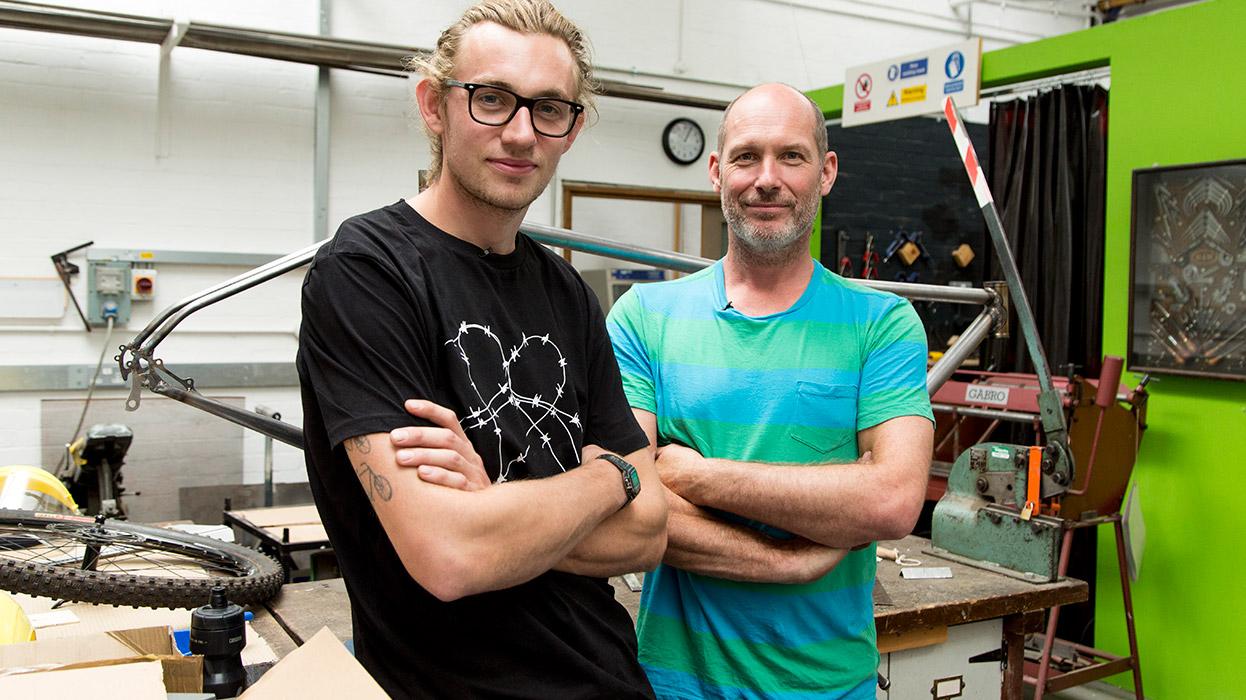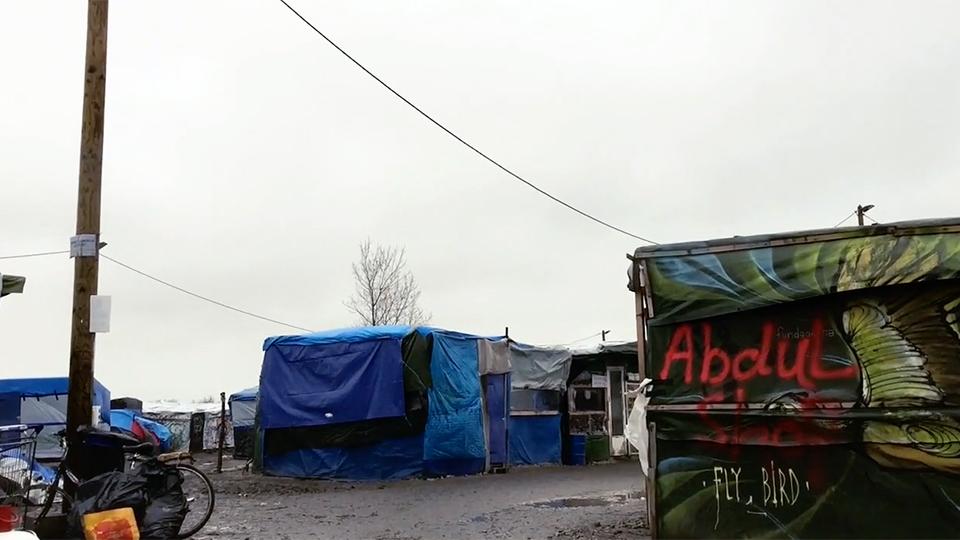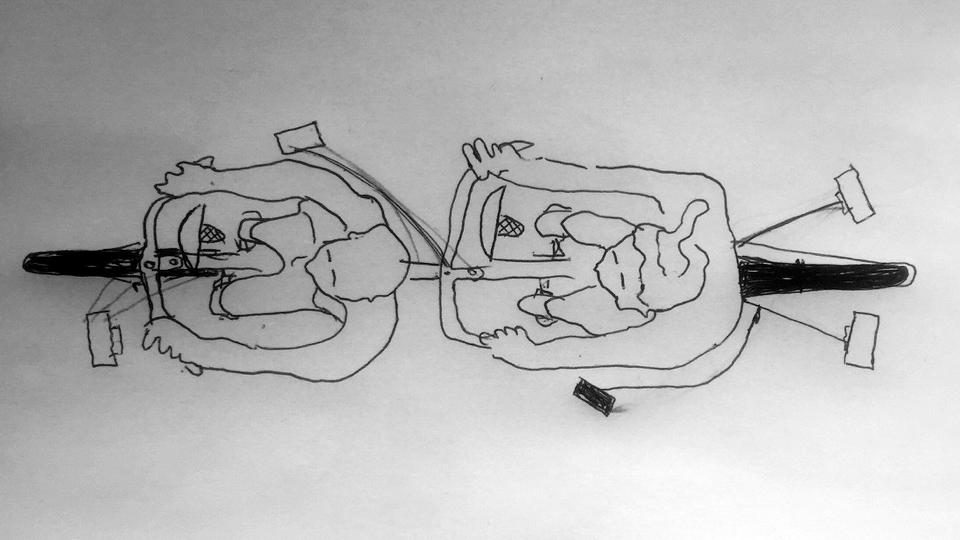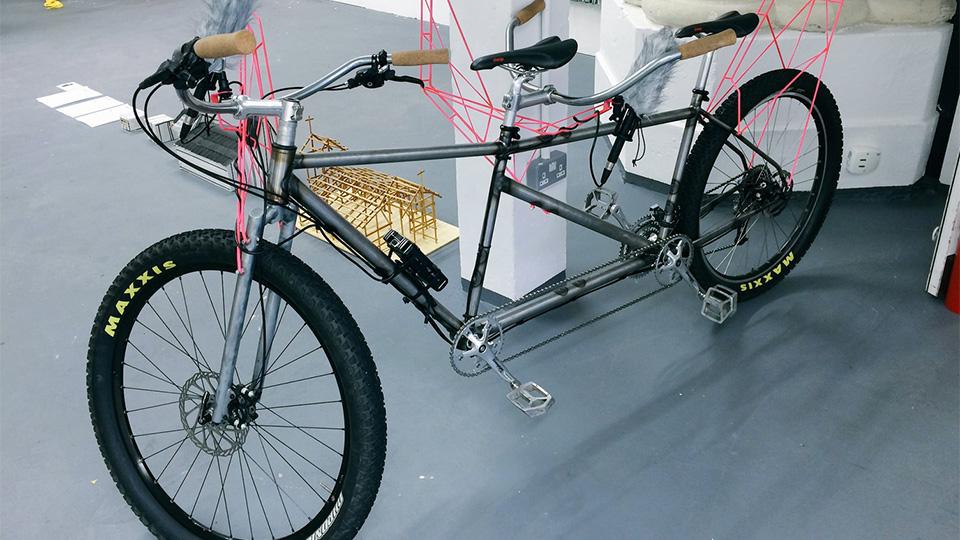Goldsmiths designers put Calais Jungle on the map
Primary page content
The huge refugee camp at Calais known as ‘the Jungle’ is now represented on Google Maps, as part of an attempt to document the site by researchers at Goldsmiths, University of London who initially worked there as volunteers.

Liam Healy (left) and Jimmy Loizeau in the design workshops at Goldsmiths
Despite existing on its current site for several years and housing an estimated 10,000 people, until recently the camp did not appear on any mapping platforms, such as Google Maps, Street View, or Apple Maps. The camp’s inhabitants were considered “non people in a non space”.
So Liam Healy and Jimmy Loizeau from the Department of Design, with students and colleagues they met through volunteer work building in ‘the Jungle’ last year, are recording and mapping the camp themselves, giving it a form of recognition as a space online.
Working under the project name Design Unlikely Futures, they have now built a custom tandem bike, equipped with microphones and cameras. This September they plan to cycle to Calais, and the bike will then tour the camp, helping the team conduct interviews with residents and volunteers.

“We don’t want to create a voyeuristic film,” explains Jimmy, Lecturer in Design.
“This works both ways, it’s a collaboration. There’s an awful lot to be learnt from the people in the camp, and the way they have self-organised and built an infrastructure. These are people from all over the world, but they’re linked by the desire to escape.
“A tandem bike gives us loads of different options about who’s riding it and who’s being interviewed at any one time. We think the film will show similarities as well as differences between interviewer and interviewee, and help break through the ‘us and them mentality’ that arises in the language used by media and politicians to describe people living in the camp.”
Using traditional cartographic techniques as well as emerging technologies such as streetview, the team have set about capturing the social, political and physical fabric of the evolving site and its community.
A collection of photo spheres taken of the camp by the research team so far have been viewed hundreds of thousands of times online, but were geo-tagged with the wrong location, as the site did not exist, according to Google.
Upon attempting to add it to Google Maps earlier this year as a new location, a Google Maps administrator denied the addition, giving the reason that the “information was wrong”.

As the refugee situation in Calais has become increasingly critical, the dominant government action has been the construction of higher, more robust fences, increased security, and the violent dismantling of parts of the camp earlier this year.
Goldsmiths BA Design alumnus and visiting tutor Liam Healy explains: “The occupants of the Calais Jungle are increasingly depicted as a swarm, a mass or a wave. ‘The Jungle’ isn’t recognised by British or French governments as a place and its inhabitants are offered minimal aid from aid agencies because of this.
“Dehumanised as a mass, the camp is suffering with inadequate infrastructure, sanitation and is constantly under threat of partial or complete eradication.”


The Calais tandem bike project will be exhibited at the Goldsmiths MA Design exhibition on Saturday 17 and Sunday 18 September, as part of the Goldsmiths Design Festival 2016.
Design Unlikely Futures (www.duf.space) are a disparate, collaborative group of designers and artists that emerged from Goldsmiths via the Calais ‘Jungle' while working as volunteer builders in the camp. Their aim is to collaboratively design alternative futures for capturing the social, political and physical fabric of the site, and to document the camp, as a space, an evolving community, a population locked in transit.
An interview with Liam Healy and Jimmy Loizeau